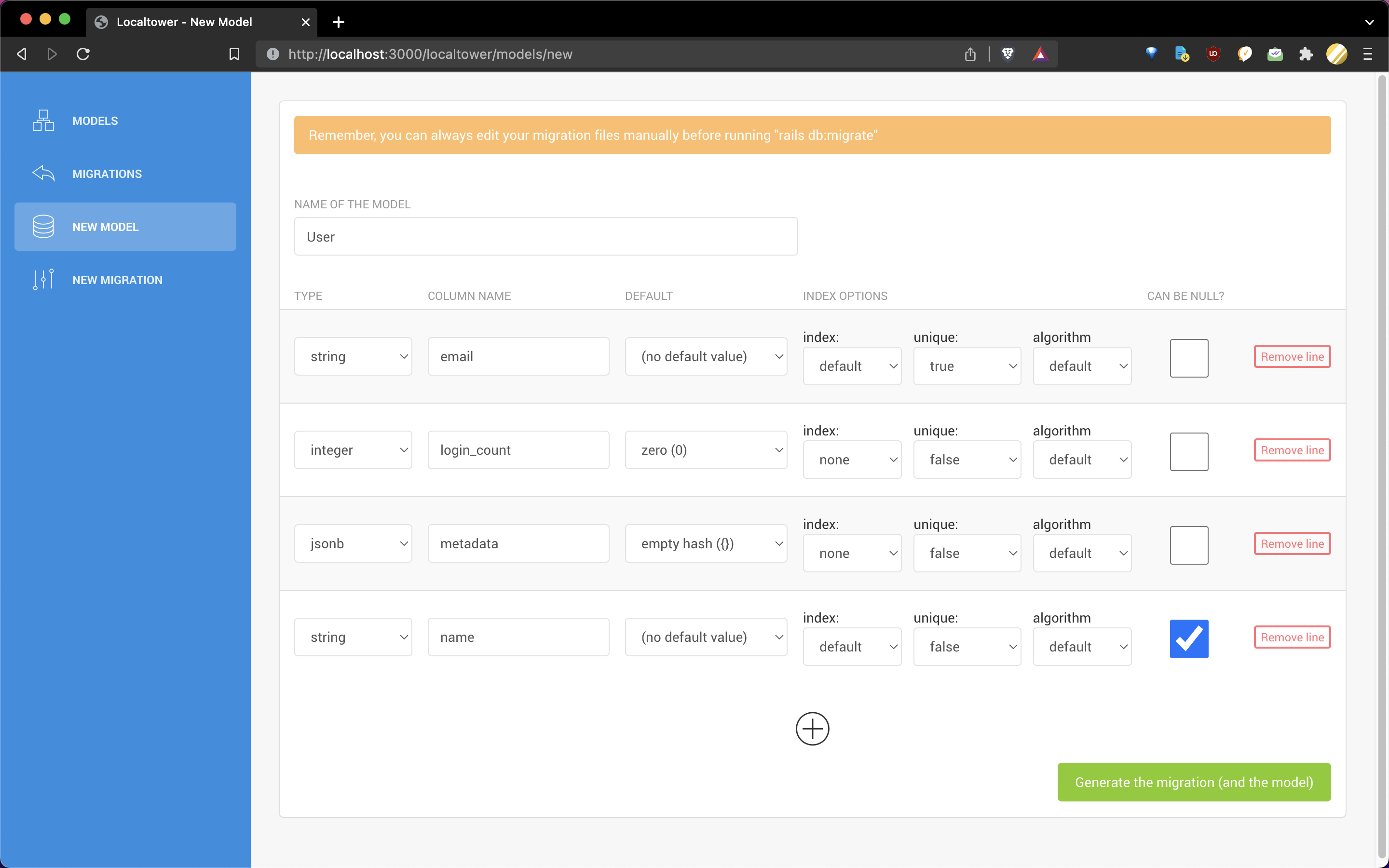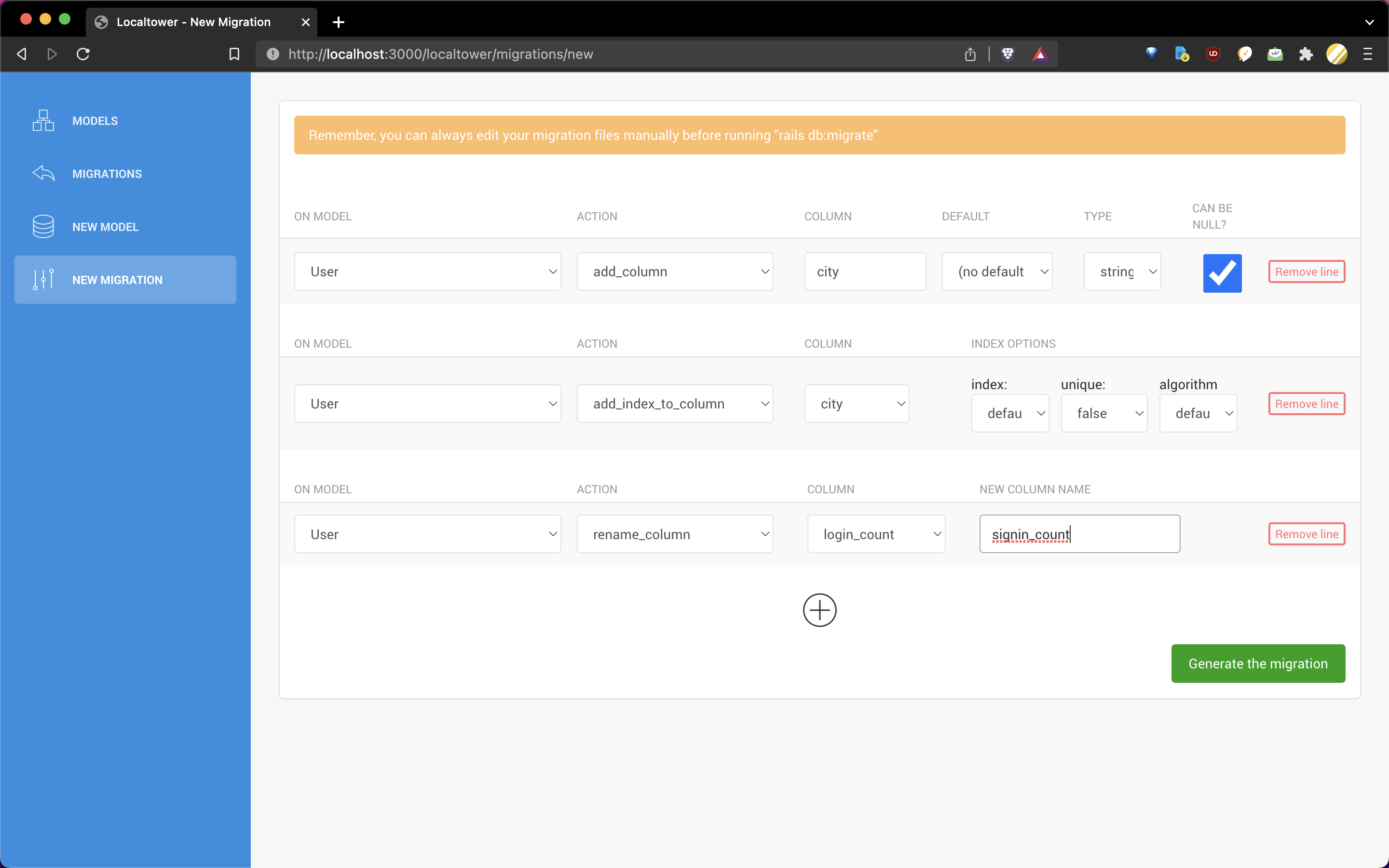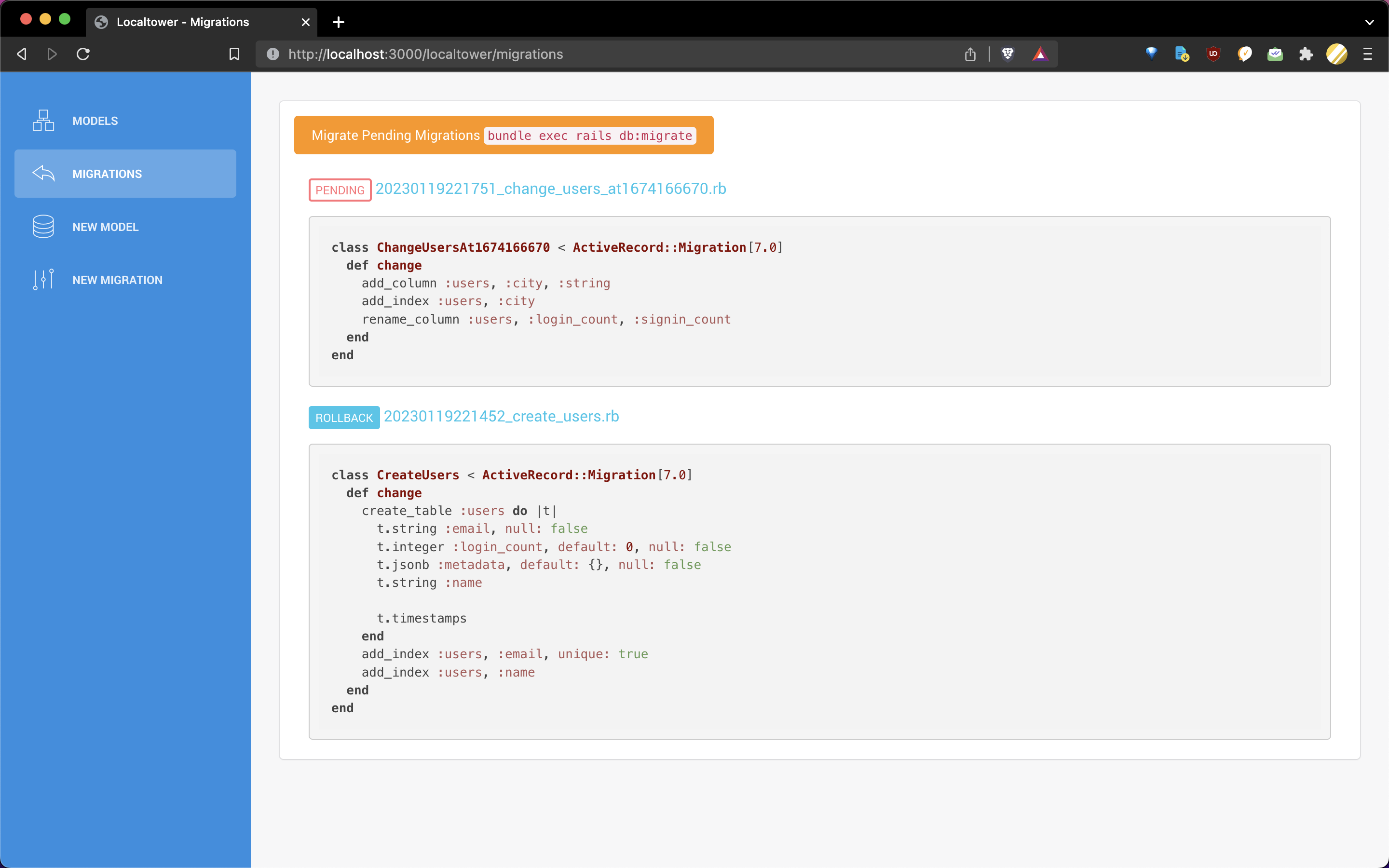- What is Localtower?
Localtower is a Rails Engine mountable in development environment to help you generate migrations for your Rails application.
It's like ActiveAdmin or Sidekiq UI.
You plug it in your config/routes.rb and it works out of the box.
Check the Installation section below for more details.
- How Localtower works?
Localtower gives you a UI to create models and migrations. It will generate a migration file like you would do with rails generate migration add_index_to_users. You will see the generated file in db/migrate/ folder.
- Why creating a UI for Rails migrations?
Rails migrations are well documented in the official Rails Guides but we often tend to forget some commands or do typo errors. Like writing add_index :user, :email instead of add_index :users, :email (did you spot the typo?). Working from a UI with a fixed list of commands reduces the chance of making errors.
- When I'm using Localtower, can I still generate migrations from the command line?
Of course! Localtower does not lock you up. You can still generate migrations like you did before. Localtower is just a migration generator. You can also generate a migration from Localtower and then edit it manually before running rails db:migrate
- What does happen when I want to remove Localtower?
You just have to remove the gem from your Gemfile, run bundle, remove the engine in config/routes.rb, and that's it! All your previous migrations will stay in db/migrate/. You are never locked up with Localtower. You can install or uninstall anytime. Remember, it is just a UI to generate files. Do not hesitate to open an issue on Github and tell me why you don't want it anymore. It will be very valuable for me to understand what I can do better ❤.
- Cool, but there are some migration options that are not available in Localtower, what can I do?
Localtower doesn't implement all the Rails Migrations API. I focused on the most common scenarios. If you need to do something tricky in your migrations, you can still edit the migrations manually. You are also welcome to open an issue on Github to ask for a specific feature. I'm always open to extend the possibilities of Localtower.
Please use localtower version >= 1.0.0
See installation process below.
Compatibility:
- Rails >= 5.2
- Ruby >= 2.3
Add to your Gemfile file:
# In your current group 'development':
group :development do
# [probably other gems here]
gem 'localtower'
end
# Or as a one liner:
gem 'localtower', group: :developmentRun command in your terminal:
bundle installAdd to your config/routes.rb:
MyApp::Application.routes.draw do
if Rails.env.development?
mount Localtower::Engine, at: 'localtower'
end
# Your other routes here:
# ...
end⚠ IMPORTANT ⚠
Change your config/environments/development.rb:
Rails.application.configure do
# This is the default:
# config.active_record.migration_error = :page_load
# Change it to:
config.active_record.migration_error = false if defined?(Localtower)
# ...
endIf you know how to override this configuration in the gem instead of doing it in your app code, please open an issue and tell me your solution.
To access the UI, run your local rails server and open your browser at http://localhost:3000/localtower.
I recommend you to upgrade to the latest version which is 1.0.0.
To upgrade, just use the latest version of Localtower:
bundle update localtower
- Be able to use
uuidinstead ofidas primary when creating models. - Realtime preview of the migration files
- Better frontend validation
Thanks for reporting issues, I'll do my best to fix the bugs 💪
If you want to contribute to the gem:
Create a spec/dummy/.env file with the credentials to your PostgreSQL Database. It should look like this:
LOCALTOWER_PG_USERNAME="admin"
LOCALTOWER_PG_PASSWORD="root_or_smething"
Run the spec:
bundle install
bundle exec rspec spec/Only for official contributors.
git tag v1.0.0 # change by last version
git push --tags
rm *.gem
gem build localtower.gemspec
gem push localtower-*.gem
Do not hesitate to open issues if you have troubles using the gem.
- By Damian Le Nouaille:
- Twitter: https://twitter.com/damian_lnd
- Website: https://damln.com
- Link on RubyGems.org: https://rubygems.org/gems/localtower
- Stats on BestGems.org (30k+ downloads): https://bestgems.org/gems/localtower












